Soviet jet:
Check out my Soviet era challenge! : Soviet challenge
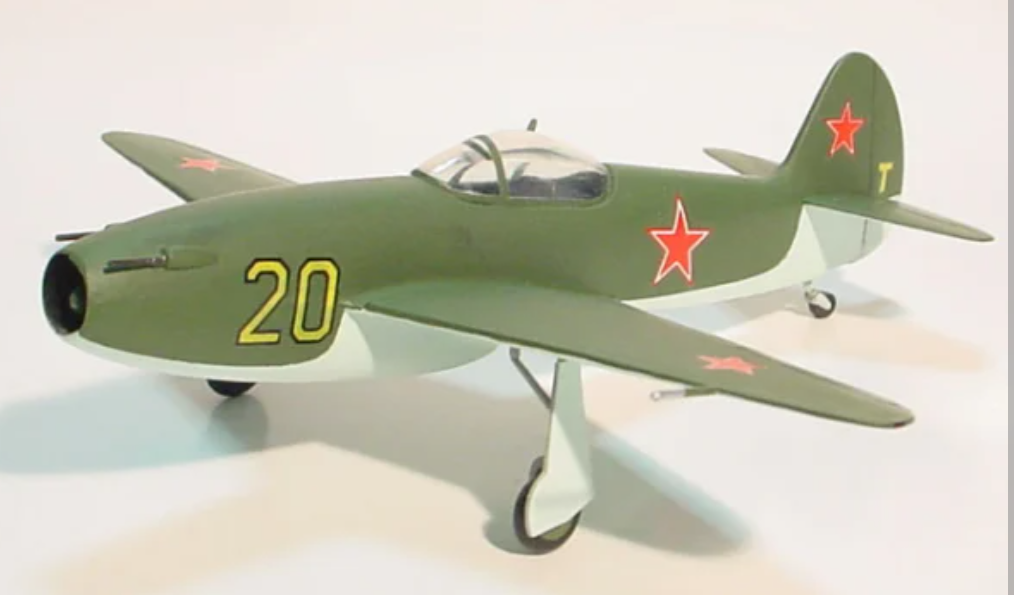
The Yakovlev Yak-15 (NATO reporting name: Feather,[1] USAF/DOD designation Type 2) is a first-generation Soviet turbojet fighter developed by the Yakovlev design bureau (OKB) immediately after World War II. The main fuselage was that of Yakovlev Yak-3 piston-engine fighter modified to mount a reverse-engineered German Junkers Jumo 004 engine. The Yak-15 and the Swedish Saab 21R were the only two jets to be successfully converted from piston-power to enter production.[3] 280 aircraft were built in 1947. Although nominally a fighter, it was mainly used to qualify piston-engine-experienced pilots to fly jets.
Desing:
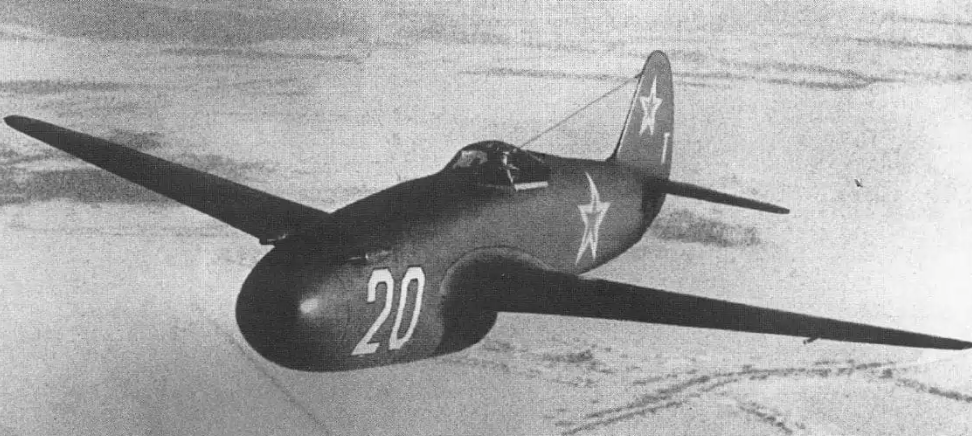
On 9 April 1945, the Council of People's Commissars ordered the Yakovlev OKB to develop a single-seat jet fighter to be equipped with a single German Jumo 004 engine. To save time, Yakovlev based the new design (known as the Yak-3-Jumo or Yak-Jumo) on the latest version of his successful Yakovlev Yak-3 piston-engined fighter. The piston engine was removed and the jet engine was mounted underneath the forward fuselage so that its exhaust exited underneath the middle of the fuselage. To protect the fuselage, a steel heatshield was added to its bottom. The deeper forward part of the fuselage caused the configuration of the aircraft to resemble a "pod-and-boom".[4] Very few changes were made to the metal fuselage other than at the aircraft's nose. This was recontoured to accommodate the armament of two 23-millimeter (0.91 in) Nudelman-Suranov NS-23 autocannon, an additional fuel tank above the engine and the engine itself. No changes were made to the wings other than the elimination of the air intakes for the oil cooler and the bending of the front wing spar into an inverted U-shape to clear the engine. The vertical stabilizer was slightly enlarged, but the tailplane was unmodified. The conventional landing gear was also unmodified other than the tailwheel which now used several steel leaf springs as shock absorbers. The Yak-Jumo carried a total of 590 kilograms (1,300 lb) of fuel.
tests began in October 1945, but the heatshield proved to be too short and the heat from the engine exhaust melted the duralumin skin of the rear fuselage as well as the rubber tire of the tailwheel. Modifications to rectify the problems took until late December. By this time a second prototype had been completed with a solid steel tailwheel and an enlarged tailplane. After a few taxiing tests, it was transferred to the Central Aerohydrodynamic Institute (TsAGI) for full-scale windtunnel testing that lasted until February 1946. On the 26th of that month, the Council of People's Commissars issued requirements that the aircraft should have a maximum speed of 770 km/h (480 mph) at sea level and a speed of 850 km/h (530 mph) at an altitude of 5,000 meters (16,400 ft). It should be able to climb to that altitude in 4+1/2 minutes or less and it should have a range of 500 kilometers (310 mi) at 90% of maximum speed. Two prototypes were to be ready for flight testing on 1 September.[6]
The Mikoyan-Gurevich OKB was developing the MiG-9 at the same time. According to aviation historians Bill Gunston and Yefim Gordon, representatives from Yakovlev and Mikoyan-Gurevich tossed a coin on 24 April 1946 to determine which aircraft would be the first Soviet jet to fly. Yakovlev lost and the Yak-Jumo made one circuit of the airfield before landing.[7] The manufacturer's flight testing of the aircraft was completed on 22 June, but its early success caused the Council of Ministers to issue a new requirement on 29 April for two aircraft powered by the Soviet-built RD-10 engine (known as the Yak-15, Yak-15RD10 or Yak-RD). Aside from the new engine, the requirement differed from the previous one only in a range of 700 kilometers (430 mi) at optimum cruise speed and a reduction of the maximum ceiling to 14,000 meters (45,930 ft). Two prototypes were ordered to be available for flight testing on 1 September 1946.[6]
Yakovlev was able to adapt the two existing prototypes to the RD-10 with little trouble and one aircraft participated in the August 1946 Tushino flypast. The day after the aerial display, Joseph Stalin summoned Artem Mikoyan and Aleksandr Yakovlev to his office and ordered that each OKB build 15 aircraft to participate in the 7 November parade in Red Square commemorating the anniversary of the October Revolution. Factory No. 31 in Tbilisi was chosen to build the new aircraft because it was still building conventional Yak-3s and could easily switch to the jet fighter. All 15 aircraft were built before the deadline, although they lacked any armour, were provided with an enlarged fuel tank in lieu of armament, and had an incomplete avionics outfit. The parade was canceled and two of the aircraft were modified with a single 23 mm cannon and began State acceptance trials which lasted until April 1947.[8]
The tests revealed a number of problems in that the thick wing inherited from the Yak-3 limited the top speed of the aircraft, the engine exhaust damaged the surface of the airfield, the cockpit often filled with smoke from kerosene and oil that had dripped onto the engine, and the aircraft was very short-ranged. Despite these problems, the Yak-15 proved to be very easy to fly, even for pilots accustomed to piston-engined fighters, and caused the VVS to accept the fighter as a conversion trainer.[9]
Specifications
General Characteristics
- Created On Android
- Wingspan 53.8ft (16.4m)
- Length 50.7ft (15.5m)
- Height 17.4ft (5.3m)
- Empty Weight 6,800lbs (3,084kg)
- Loaded Weight 14,579lbs (6,613kg)
Performance
- Power/Weight Ratio 1.04
- Wing Loading 22.8lbs/ft2 (111.3kg/m2)
- Wing Area 639.6ft2 (59.4m2)
- Drag Points 4860
Parts
- Number of Parts 66
- Control Surfaces 10
- Performance Cost 353



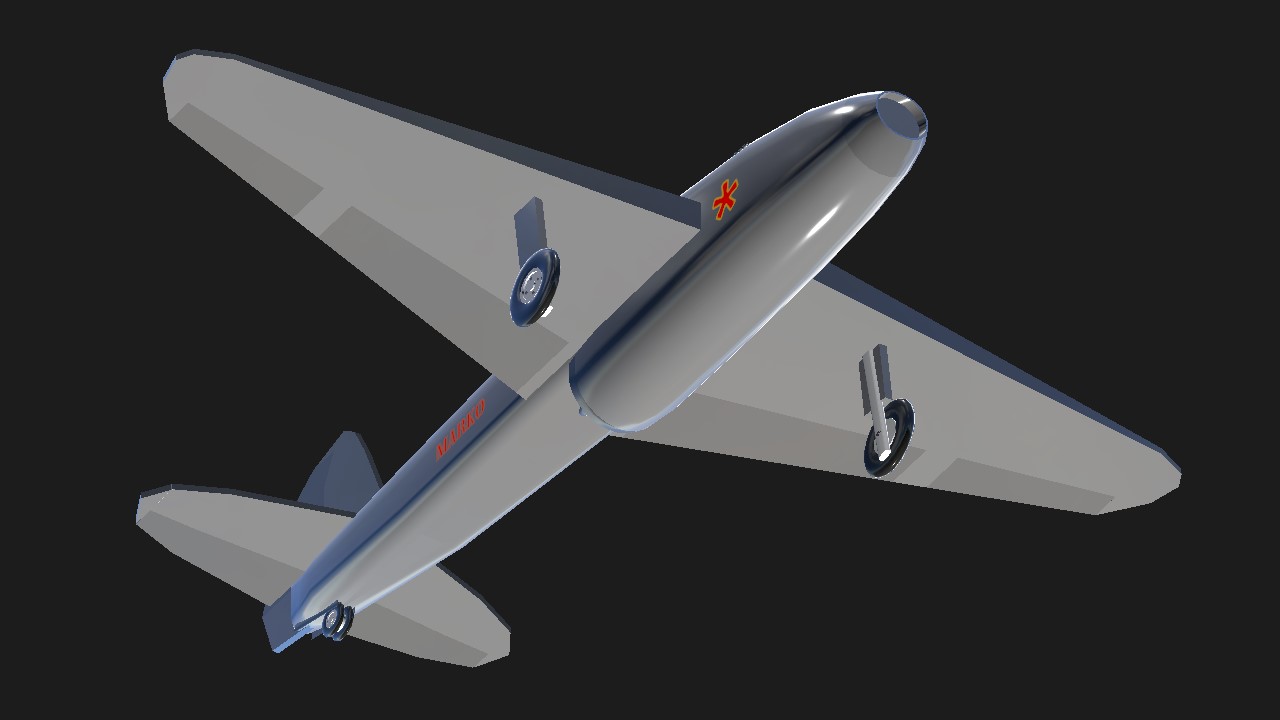

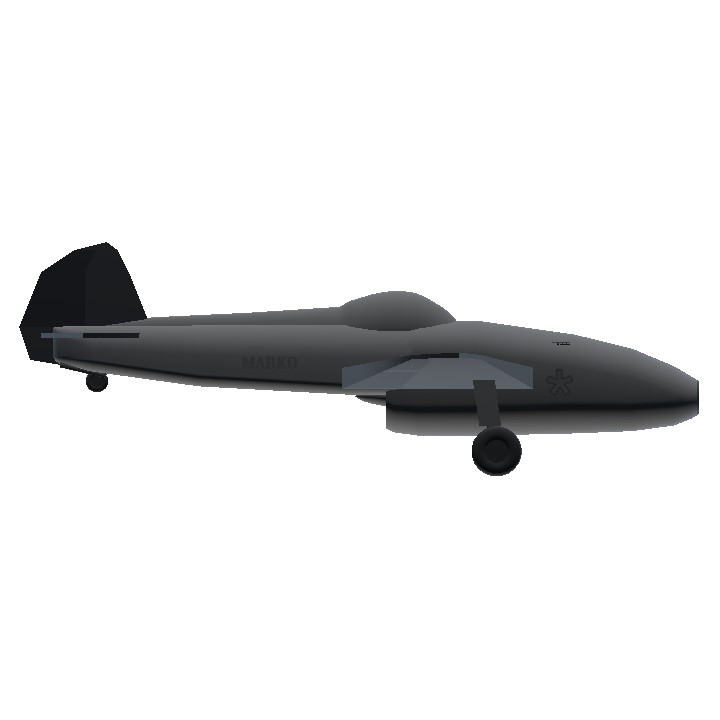
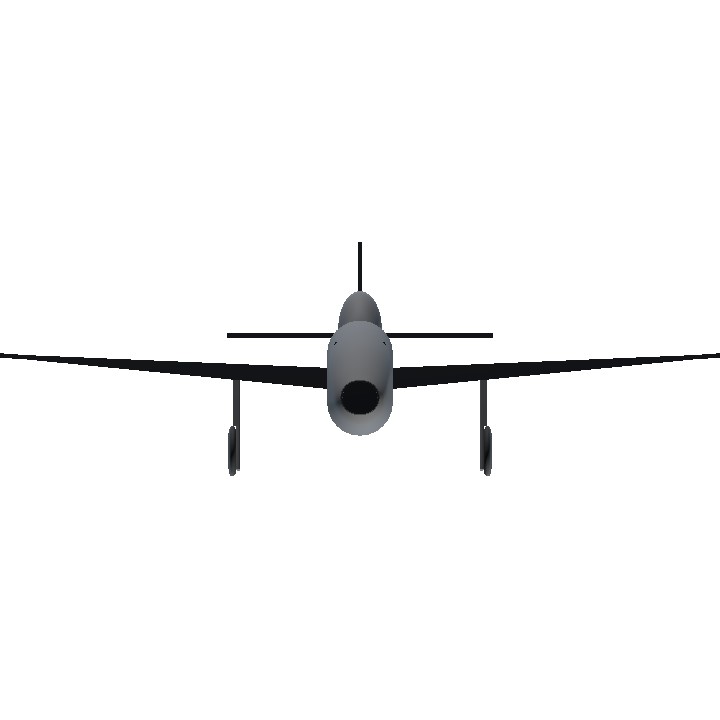
Cool
I wan make 1
It's really good, brother.